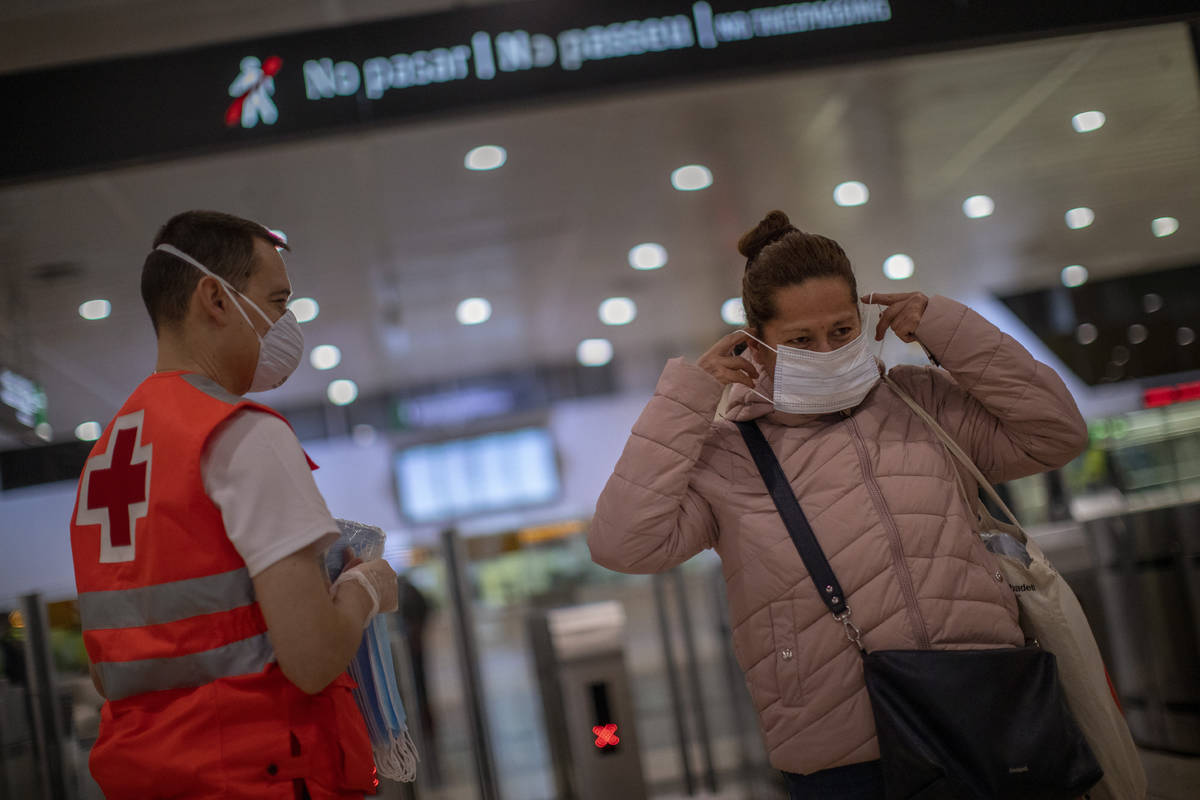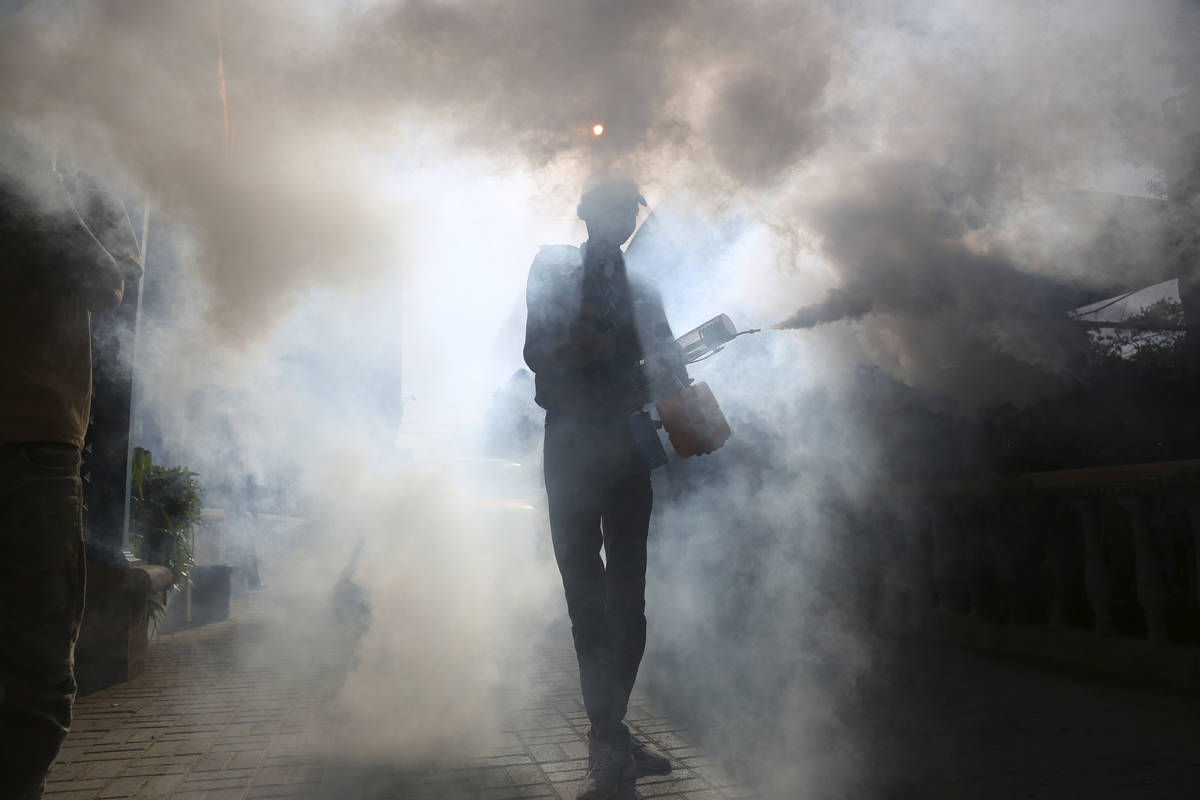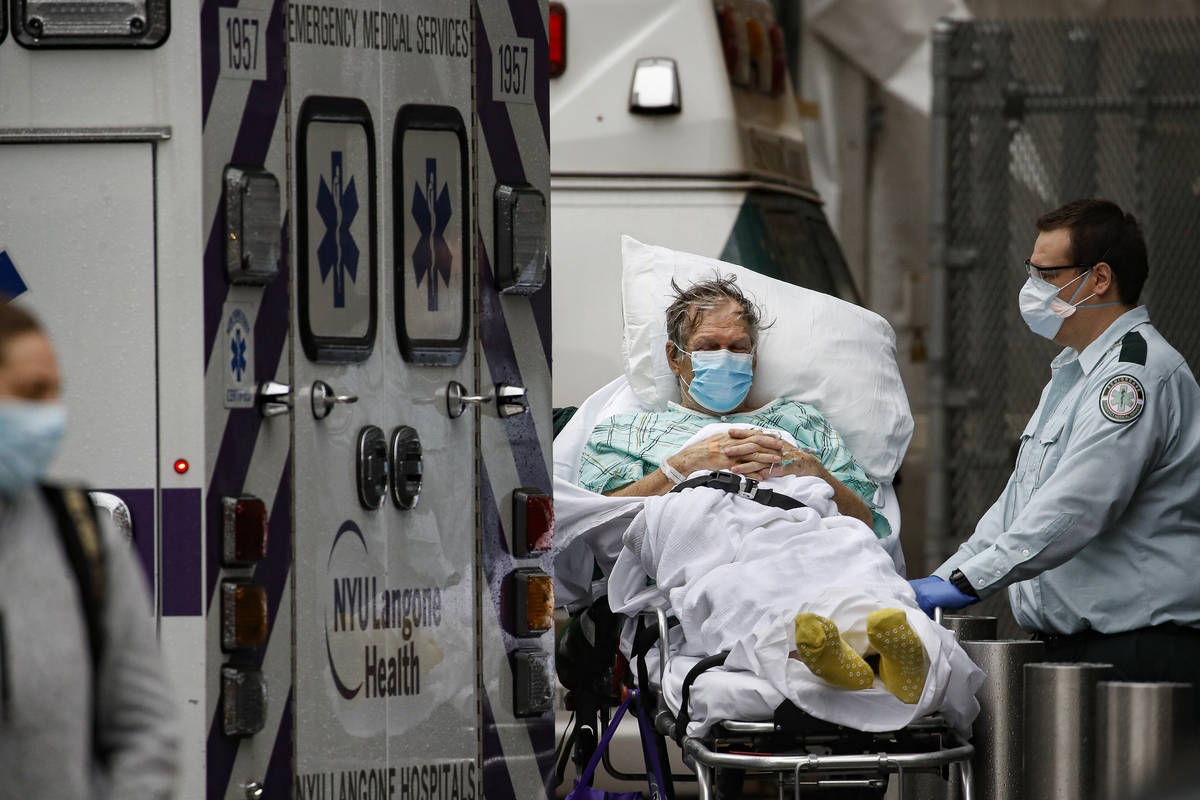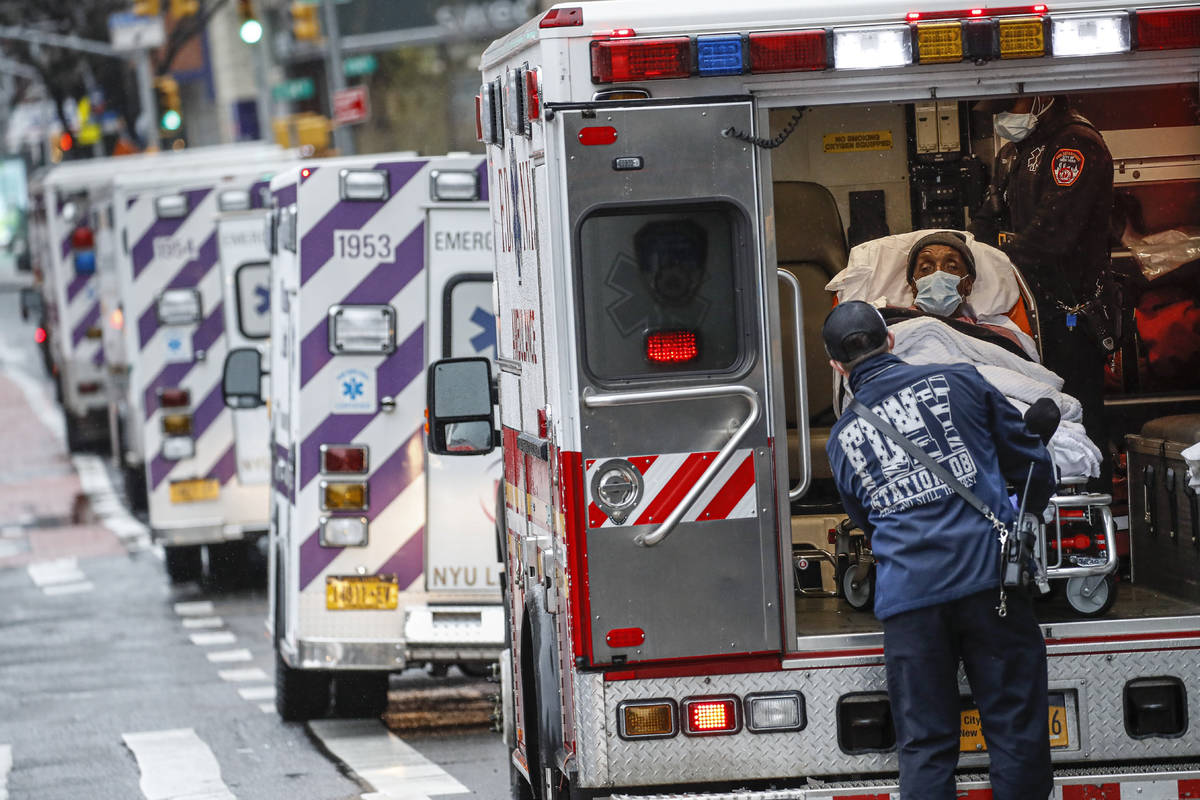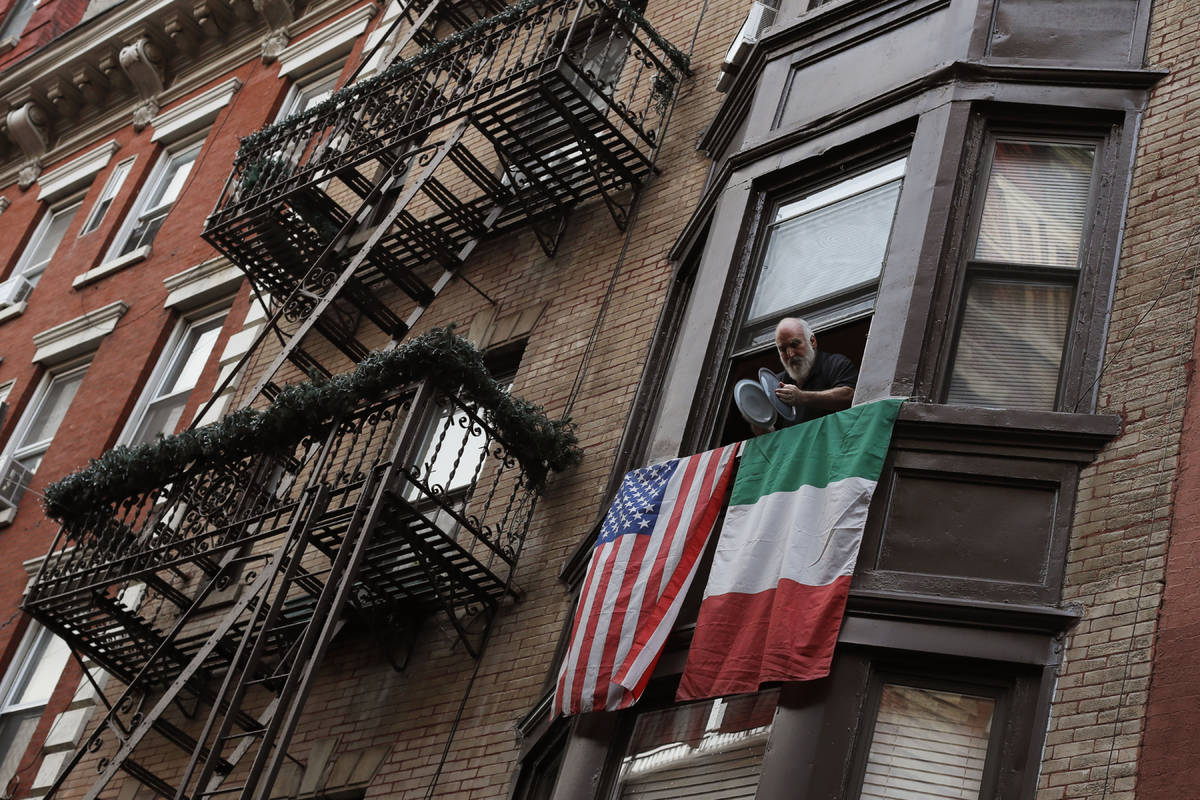Technology, tests, coordination all critical to end virus lockdowns
BERLIN — Governments battling a virus that has crossed borders with breathtaking swiftness pinned their hopes Tuesday on tests, technology and a coordinated approach to ease the tight social distancing restrictions that have slowed the pandemic but strangled the global economy.
While the European Union looked into creating a COVID-19 smartphone app that could function across the bloc, governors on both U.S. coasts pledged to work together as they planned an end to the confinement of millions. The main concern is to avoid new coronavirus hot spots and flare-ups of infections but building such infrastructure while still in mid-crisis during the pandemic is proving difficult.
In India, the government on Tuesday extended the world’s largest lockdown on 1.3 billion people until May 3 for most of the country, as its caseload crossed 10,000. In Britain, new data Tuesday showed hundreds more people died of the virus than have been recorded in the government’s daily tally from hospitals, including a tide of deaths in nursing homes.
China faced a new flare-up along its remote northern border with Russia. That vast border has been sealed and emergency medical units have rushed to the area to prevent travelers from bringing the virus back from overseas.
New infections appear to have leveled off in much of Asia and Europe, including Italy, France, Spain and Germany, said Dr. Sebastian Johnston, a professor of respiratory medicine at Imperial College London.
Even in New York — where reported coronavirus deaths passed 10,000 on Monday — Gov. Andrew Cuomo declared the “worst is over if we can continue to be smart.” More than 23,000 people have died of the virus in the United States overall, with 582,000 confirmed infections, according to a tally by Johns Hopkins University.
With social distancing and lockdowns in place across a large portion of the world, grim projections that the virus that would spread with equal ferocity to other corners have yet to materialize. But without widespread antibody tests to determine how many people are immune to the virus, governments fear that relaxing social distancing could lead to new outbreaks.
Smartphone app for EU
Germany’s foreign minister, Heiko Maas, called Tuesday for a single smartphone app to be used across the 27-nation EU to help countries coordinate when and how to relax their pandemic lockdown measures.
“It’s important we don’t end up with a patchwork of 27 corona apps and 27 data protection regimes, but coordinate as best as possible,” he told Germany’s Funke media group.
Maas said a contract tracing app already being jointly developed by several countries showed that the EU “doesn’t have to copy the Big Brother methods of authoritarian states” but can instead safeguard personal privacy and public health at the same time.
Lothar Wieler, head of the Robert Koch Institute, Germany’s disease control center, said constantly exchanging information between countries and institutions about best practices, vaccine studies and how best to protect vulnerable populations is key to combating the pandemic.
Apple, Google team up
Apple and Google last week announced a separate joint effort to help public health agencies worldwide use Bluetooth wireless technology to trace the contacts of those infected to slow the spread of the virus. That will run on iPhones and Android phones alike.
In China, where new reported virus cases have dwindled, life is ruled by a green symbol on a smartphone screen that says a user is symptom-free and can board a subway, check into a hotel or just enter Wuhan, the city of 11 million where the pandemic began in December.
South Korea and Israel have both aggressively used smartphone data to track the movements of virus carriers. But epidemiologists say contact tracing can only be effective with widely available testing, which has been lacking in places like the United States and Britain.
Experts say the infection rate still remains relatively low in parts of the developing world that have poor or nonexistent health care infrastructure.
Rural areas a concern
The rapid spread of the coronavirus beyond cities to more rural areas often depends on travel and social connections, said Dr. Mike Ryan, the World Health Organization’s emergencies chief. That could explain why Germany and Switzerland, with their world-class train systems, have over 155,000 infections between them.
But he noted that rural areas often have less sophisticated health surveillance systems to pick up potential disease clusters.
“Is it that it’s not there, or is it that we’re not detecting the disease?” he asked.
Johnston said he worried the virus might take off across Latin America, Africa and Southeast Asia and also expressed concerns about Russia.
Positive signs
Despite the absence of a coordinated European exit strategy, officials pointed to positive signs as they started to reopen largely shuttered economies.
Italy’s day-to-day increase in infections was one of the lowest in weeks, bolstering a generally downward trend. Bookstores, stationary stores and shops selling baby supplies were allowed to open nationwide Tuesday, provided they could maintain social distancing. Forestry workers, needed to clear dead trees ahead of the summer fire season, also returned to work.
In hard-hit Spain, the recorded virus deaths rose to over 18,000. The country’s main epidemiology institute also found an additional 1,500 “unexpected deaths” from March 17 to April 11 after it studied mortality rates.
Spanish workers returned Monday to some factory and construction jobs. Retail stores and services were still closed and the government required office workers to keep working from home.
In Austria, hardware and gardening stores reopened Tuesday but Chancellor Sebastian Kurz said the government was monitoring new infections closely.
“If the figures develop in the wrong direction, we will of course pull the emergency brake,” Kurz said.
In Britain, which started its lockdown later than the rest of Europe, new infections and deaths were still on the rise. Britain as of Monday reported 11,329 deaths of COVID-19 patients in hospitals. But the boss of one of the country’s biggest nursing home operators said Tuesday that the number of coronavirus cases and deaths among elderly residents is much higher than official reports.
Governors vs. president in US
In the United States, governors in the Northeast and along the West Coast announced separate state groups to coordinate reopenings.
California Gov. Gavin Newsom said he would announce a detailed plan Tuesday for lifting virus restrictions, saying he will use “science to guide our decision-making and not political pressure.”
“The house is still on fire,” New Jersey Gov. Phil Murphy said. “We still have to put the fire out … (but we need) to make sure this doesn’t reignite.”
New Jersey is in a coalition with Connecticut, Delaware, Massachusetts, New York, Pennsylvania and Rhode Island to jointly figure out ways to reopen their economies while still fighting the pandemic. The governors of California, Oregon and Washington announced a similar plan.
A miffed President Donald Trump pushed back against the governors, claiming “the federal government has absolute power” over easing restrictions. The Constitution, however, largely gives states the authority to regulate their own affairs.
More than 1.9 million infections have been reported and over 119,000 people have died worldwide, according to Johns Hopkins University. The figures understate the true size of the pandemic, due to limited testing, uneven counting of the dead and unreliable figures from some governments.



